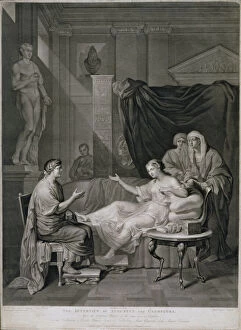Empereur Collection
"Empereur: A Symbol of Power and Authority" The Tarot Card 4 - L'Empereur (The Emperor) represents strength, leadership, and control
All Professionally Made to Order for Quick Shipping
"Empereur: A Symbol of Power and Authority" The Tarot Card 4 - L'Empereur (The Emperor) represents strength, leadership, and control. It signifies a figure who commands respect and holds immense power. Just like the Quai de l'Empereur in Ostend, Belgium, this card reminds us of the grandeur associated with emperors throughout history. One such emperor was Rudolph II of Austria, depicted in the Coronation Crown detail. This exquisite piece showcases his regal presence during battle, adorned with gold, pearls, enamel, and a ruby. The crown symbolizes the authority bestowed upon an emperor. Charlemagne is another iconic figure associated with emperors. In an illustration from 1895 titled "Charlemagne with a student inventing the school, " we see his influence on education and knowledge as he lays the foundation for learning. History also remembers Charlemagne's triumphs on the battlefield. During the Siege of Pavia in 773-774, Ogger exclaims "The Iron Man. Here is Charlemagne. " This illustration captures his military prowess and strategic brilliance. Napoleon I's exile on Saint Helena serves as a reminder that even mighty emperors can face downfall. Depicted in an illustration from 1896, it portrays Napoleon's isolation after losing his empire but still showcasing his indomitable spirit. Emperor Octavian experienced moments of glory too when female slaves were presented to him as depicted in an oil painting from 1883. It highlights both luxury and dominance that often accompanied imperial rule. Lastly, we have "The Inaugural Sacrificial Procession" relief frieze dating back to 13-9 BC which depicts ancient Roman rituals surrounding imperial ascension—a testament to how far back this concept extends through time. From Tarot cards to historical events captured through art or illustrations like Ms Hunter 364 f.
















































